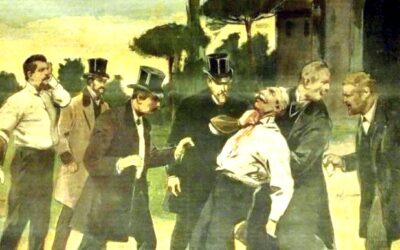The following article has been recently published in the book: “Spatha, spada, épée. Ideologia e prassi, a cura di Danila Artizzu, Antonio M. Corda, Michel-Yves Perrin” (Cagliari UNICApress 2024) under the patronage of the Università degli Studi di Cagliari and the Italian Fencing Federation.
A beautiful book, that emerges from the omonimous international convention, and the exposition “Ars dimicandi. L’arte del combattere” (Cagliari 20-21 november 2014), which was later replicated in several venues. One of those has been the Accademia Felli di Busto Arsizio that together with the Agorà della scherma of Pro Patria gave its contribution.
What are the various interventions dealing with? I copy from the second cover:
“The volumes gathers 19 essays that spin around the topic of the epee which is treated under countless aspects. It slides in fact from those closer to the object itself which is regarded now as weapon, now as ‘game’ untill it comes to meanings that transcend the function of the very object.
Different ways and different looks to tell the thousand “hypostases” of a timeless object”.
You can read them all, and download the whole book in pdf format by following this link:
https://doi.org/10.13125/unicapress.978-88-3312-133-8
I remember that pleasant trip, and my report that went a little’ beyond the established time. No one complained, Prof. Corda did not want to interrupt me, but his intervention slid down to the next day.
There has recently been a follow-up, which you can read here:
I thank Luca Gabriel Popper very much for his courtesy, and for the translation of the original text. In a note of his, which I anticipate here, he explains why he chose to translate the title in this way.
* As melody and rhythm are very important in spoken as in written Italian and as Giancarlo Toran’s choice of title “la spada della mente … che mente” not only mirrors his personal style of interpunction, but expresses totally the playful musical and poetical character of Italian language (and fencing..), it was imperative to find a solution in English that not only translated the meaning, but also the character of the phrase. Obviously there is no direct correspondence of the words, as the noun mind (mente) in Italian means to lie, whereas in English.. i will stop my analysis here. Only let me explain, that i choose “the epee of mind … that fools the mind” in stead of “tricks” or “cheats” because “to fool” reminded me of “to foil” and because one of the many questions of the article is, in my lecture, the difference (or not) between speaking about fencing and speaking about epee.
Luca Gabriel Popper
The epee of mind … that fools the mind*
War, duel, sport, show: the evolution of the epee and of fencing for the body, the mind and the
spirit. Fencing as relationship, and metaphor of life.
The epee without the epee: the essence of fencing
Abstract: Considerations of master of fencing on the origins, development and the essence of the sport, from its origins to its transformation into a modern sport. The sword as a symbol of fencing, martial arts, power and justice. Changes over time, the disappearance of the duel and bloody outcome. Importance of mental and moral characteristics, which take precedence over physical ones: the absence of a model. Links with the biologic and genetic aspects, explaining the attraction exerted by the sport of fencing.
Premise
I’ve got to know fencing as a sport as an adult, and it was love at first sight. I had practiced judo, before and i haven’t lost interest for the other martial arts. Fencing, however, first practiced and then studied systematically, gave me, from my point of view, something more.
From my point of view, because i recognize the nobility and uniqueness of each and every research, and of each and every person. Hence, what will follow, is a completely personal point of view.
When i studied to become a coach, a highly reputed teacher, not knowing what to answer to a precise questione of mine, said to me: “When you will have instructed as many students as i have, then you will understand!” I didn’t like that answer at all. I know, there are things that you understand, i mean, that become a part of you, only by directly experiencing them. But i know also that some answers are only comfortable screens to hide what one doesn’t know, or, even more simple, that one isn’t able to give a better explanation for.
This is a convention dedicated to epee, but i will speak about fencing, convinced that i won’t go off topic: the epee is the symbol of fencing, and that of time ago was very different from nowadays, in it’s form, use and purpose.
Still today, the schoolbooks for fencing coaches say that the basic elements of fencing are three: time, measure and speed.
After that important statement they aren’t virtually mentioned any more. As i had started late to practice fencing, it wasn’t enough for me to know “how” you do it, but i wanted to know also “why”. That’s how i discovered that for many things taught the why has been forgotten and therefore whereas some were still valid, some others were no more.
It’s the story of the meditation cat that i wanted to include in the texts on fencing.
The abbot of the monastery had a weakness: he couldn’t miss the company of his cat. For years he brought it with him to the meditation room, but to avoid disturbing the other monks, before starting to meditate, he binded him to the door of the room. Then the abbot died, and the new abbot buyed another.

I hence started searching, and finding, until the question rose to my mind: “What is the essence of fencing?”
Don’t you take it for a futile question, and i ask you to think about that: we can say, for example, about a boxer, that he is doing good fencing with his fists, and we will express a compliment to him. But it wouldn’t be appreciated in the same way, by a fencer, being told that he is doing good boxing, with his epee!
Inquiring the essence is not a futile question: fashions change, sports pop-up and die. Those that remain have something to offer that resists in time: for the myths they bring with them, and for the suggestions they can offer us, into a future that is changing more and more rapidly. But it isn’t only a question of fashion or of emotions: the ‘official’ sport, particularly the Olympic one, survives and prospers only if it is interesting for the sponsors. And that means numbers and money. You need to have a good product – fencing is one – and to know how to sell it.
In that we are not so good.
Fencing, considering for now only it’s technical aspects, has obviously changed in time relating to the weapons that have been used and to the situations in which they have been used.
This might be less obvious. First of all, fencing meant a complete martial art that included fighting without weapons and with any type of weapons, on foot or on horse. The offensive or difensive weapons have been of various types and their offensive or difensive potential (and sometimes both things together) has grown in time with the technological evolution.
Agriculture, once it had been asserted, allowed specialization and permanent quarters, both being necessary conditions for the advanced treatment of metallic alloys. A nomad, a hunter-gatherer, can’t forge his arms by himself, and a foundry can’r be easily moved from one place to another.
But a full-time blacksmith can dedicate himself entirely to his art only if supported by a society that, in change for the products of his work, supplies him with what he needs for a living.
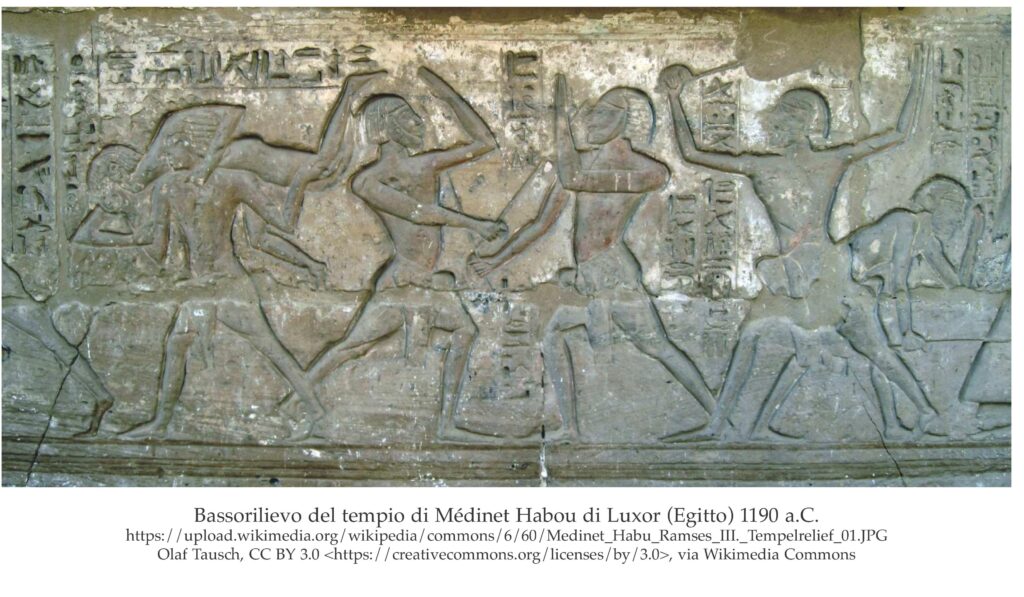
The weapons made of copper and bronze have been less resistant than those, following, made of iron, and bent easily. The swords, in particular, had hence to be short and large, and used first of all with the point.
The weapons made of iron, much harder, could be used in a different way: like the sticks, that for sure where already used before, but able to cut. The shields, the helmets, the armours, necessary against any type of weapon, like arrows or spears, had to be increasingly resistant and heavy.
The technique for the battle against multiple, protected and organized enemies, had to be necessarily different than that one established later, for duels or personal defence. The armour increases the protection but limits mobility, in proportion to it’s weight and dimensions.
The invention of gunpowder has marked an important turning point, nullifying the importance of heavy armours and leading, very gradually to the extinction of the epee as a war weapon. The sabre survives for a longer period, but it is meant to end the same way. Wearing the epee at his hip rests a prerogative of the gentleman and there is a notable evolution of the usance of the duel. The epee becomes lighter and that allows plays of point that are straighter, more complex and precise. The complete protection of the hand hence becomes still more necessary. The rapier will be the last non military weapon worn on the hip by the gentleman. This is, in my opinion, the true ancestor of modern sport weapons and results being still a deadly weapon with tip and cut. A cut that the rapier will loose soon, as, logically, the hilt.
We can find an increasing desire for compact and systematic classification of the actions in fencing in the treaties that necessarily described the techniques of the weapons of their times.
There is the transition from the numerous and pictorial “guards” of medieval fencing to the four modern ones; from the sword and dagger fighting to the acknowledged advantag of “sword alone”. Language follows and transmits habits and costumes through time: throwing hands, not taking half measures, on knife point, breaking a spear, beat swords into ploughshares, attack, be on guard, fall on his own sword, disengage; not to speak of greetings and buttons..
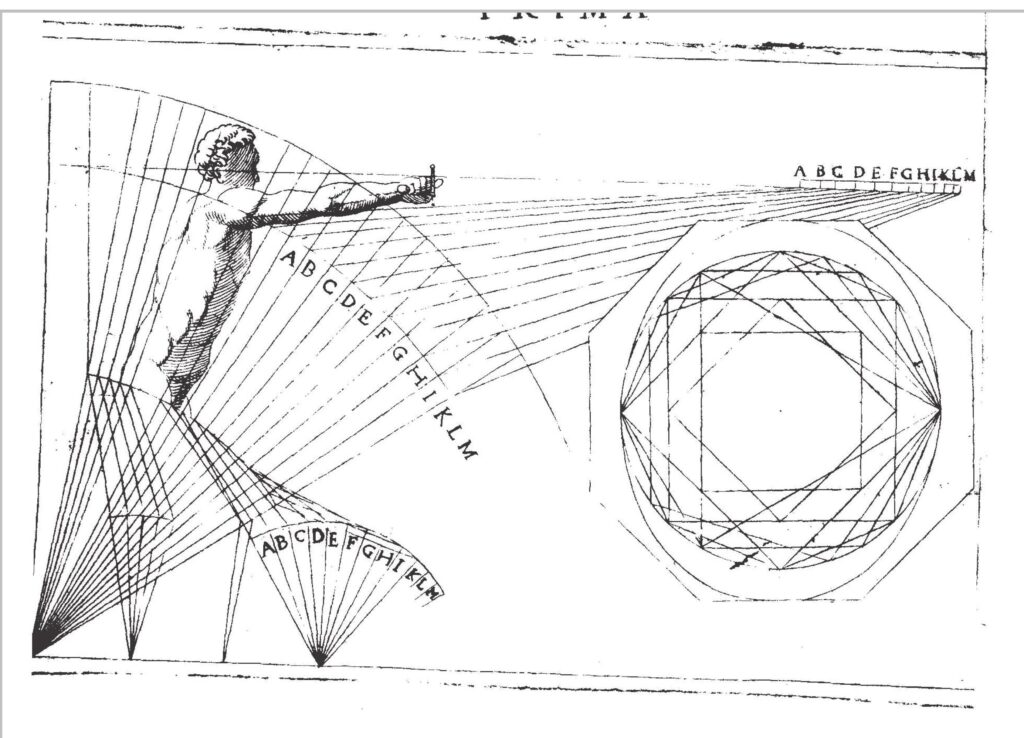
But the biggest revolution in martial-arts becoming a sport is without doubt the disappearance of the fear of death. The emotions replacing it remain, but nothing one can compare. One is moving with more freedom and speed, taking more risks, being able to die 14 times, ore more often, and still winning the bout.
The ‘blow of the two widows’* turned just into a sad memory.
New blows could be invented and experienced and the new materials foster the birth of many Dick Fosbury** of fencing, unthinkable up to then.
In the past the warrior had to face the idea of death daily. Only after having accepted it entirely, as an unavoidable and even honourable destiny, in combat, one could walk towards the clash freeminded, and the maximum of determination. Today it is the psychology of sports that claims the role once carried out by meditation or the vow before battle.
In the treaties on fencing the focus is laid on the description of the actions and more recently on their classification. Thouh stating that speed, choice of time and distance, the authors dedicate most of the pages to the description of the single actions. The fact is ignored that between the two opponents on the piste a dialogue is established made of attitudes and feints, movements and reactions, of initiatives and control, strictly influenced by tempo and distance, connected in what we could define as the rythm of the various actions. ***
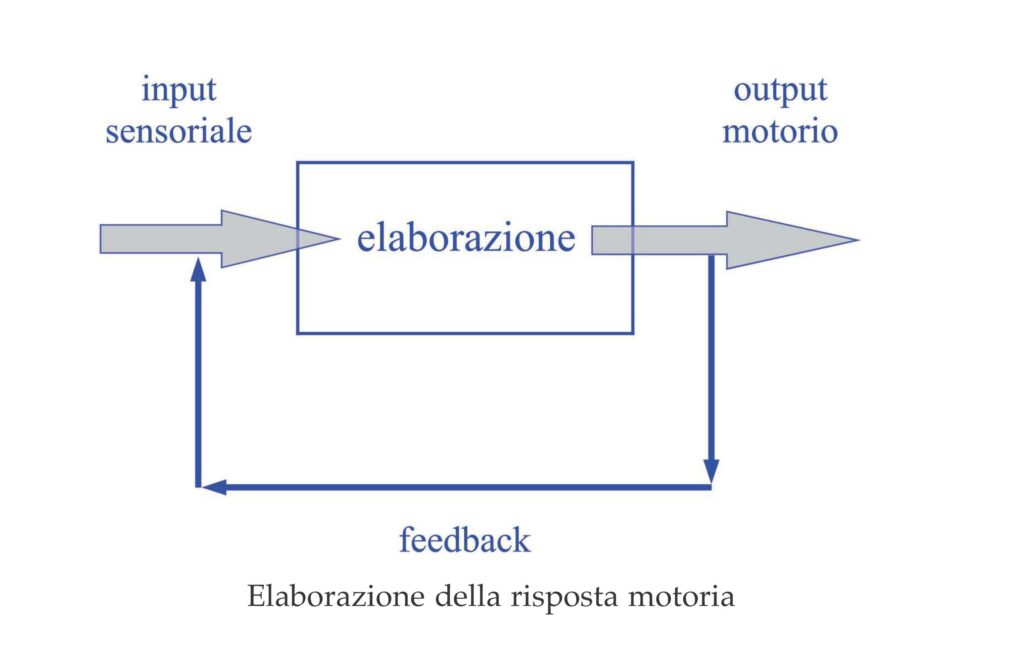
It’s impossibile not to comunicate- that’s true also and first of al for a conflict – in a fencing bout where from one to another and vice versa pass true informations, that are not voluntarily given, and false informations, given to illude the opponent enhancing him to take wrong decisions.
That is the field of tactics, that can be defined as the art to induce the opponent by deceit to act in a way that is disadvantegeous for himself, making him think that he will take advantage, to make profit.
In fencing this is called to act on second intention.
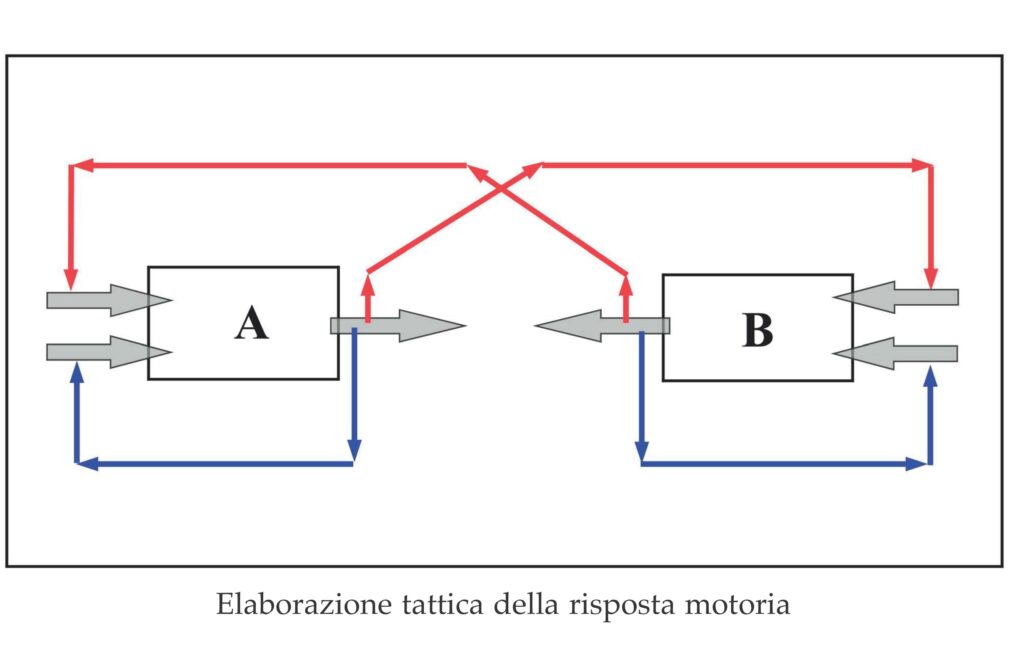
In fencing either you act or you react, you take the initiative or you succumb to it. In both cases you control: that means you try to maintain or to find the measure, the distance with the opponent, within the limits in space and time necessary for the success of the programmed action.
You adapt to the other’s rythm or try to impose your own, to create a situation of harmony, of syncronicity, that may allow you to break it, at the moment desired, with precision and effectiveness. In each complex motor action feedback is of vital importance.
In fencing the return information doesn’t come from a environment that is stable or somehow indifferent to our actions but from an opponent who is actively engaged to counteract them.
The same thing, simultaneously, happens for him.
The information that passes from one to another, voluntary and hence deceiving, or unvoluntary, and therefore true, determines the decision taking of the other in a very short time that comes close to the time of simple reaction: a time around two tenth of a second, or a bit less, however too long for the successful outcome of fencing actions. Think, for example, of the double touch in epee, actively searched by who is in advantage, that is more or less a quarter of the reaction time.
The capacity of anticipation, or choice of time, allows us to realize the desired action with the precise timing requested, with a minimum margin of error, near to zero and with a positive or negative error in timing nevertheless much smaller than the time of reaction. The fencer must be absolutely “here and now” to be efficient at high level, and that demands a remarkable mental and sentimental control.
The control of the mind is hence essential, in fencing.
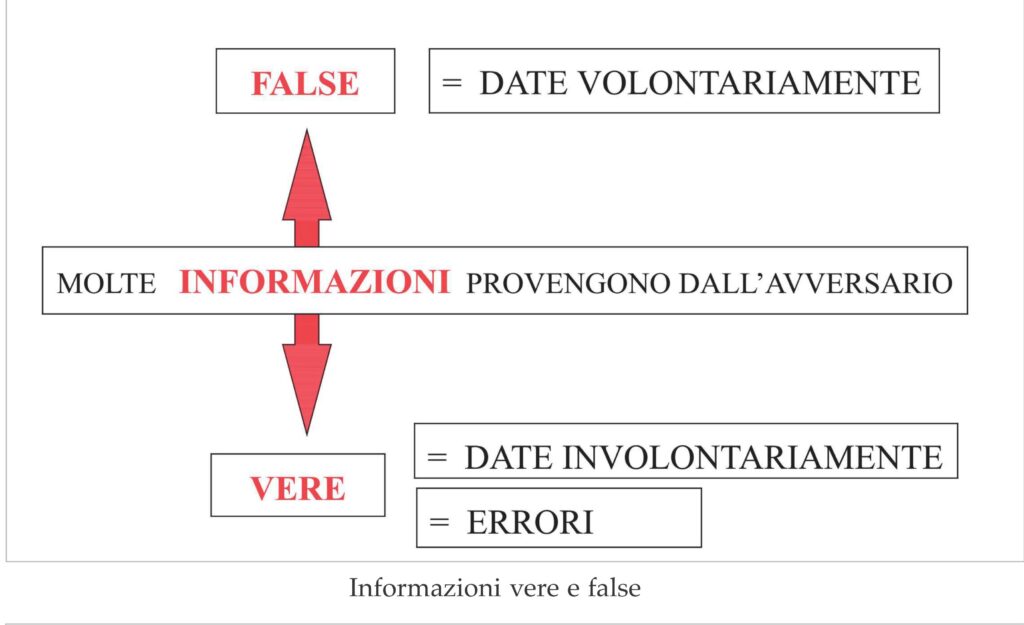
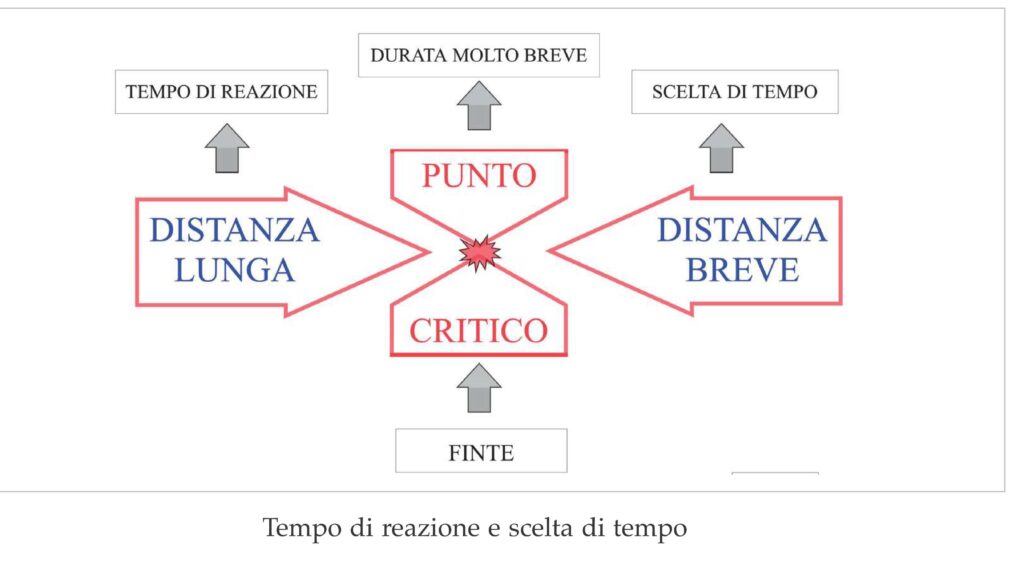
To become a good fencer various abilities have to grow together: the physical ones, the technical ones (main subject of the treaties), the tactical ones and those more specifically mental or moral. The research in the last two fields will show you inevitably that you have to cope with the inner ‘enemy’: know and accept yourself, overcome one’s own limits.
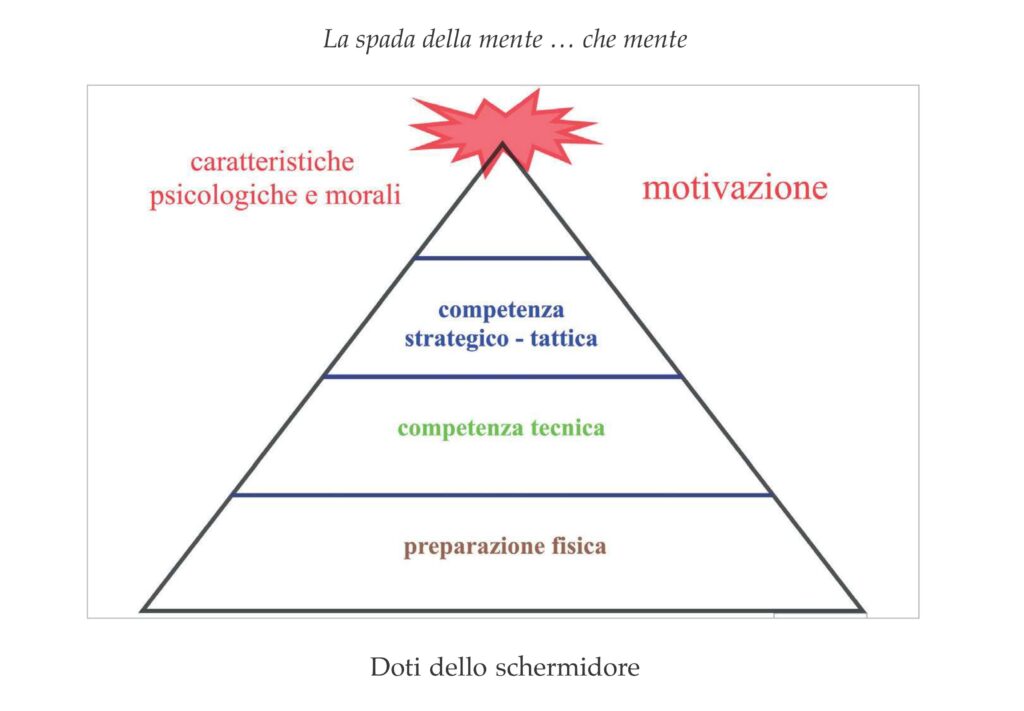 Skills of the fencer
Skills of the fencer
The preponderant importance of tactics (programming of the opponent), compared to strategy (programming of the own actions) makes fencing a truely special sport. The elimination of the fear of death, furthermore, gave the fencer more freedom to search and find innovative solutions, that once have been too risky to be experienced.
From that arose a sport without weigh categories, with athletes able to express themselves at very high levels dispite very clear differences on the physical level: the small one can beat the big if he makes a better use of his intelligence. The simplification of some aspects (movements along a line, use of only one hand, limited targets, safe weapons) and a ‘middle way’ from an emotional point of view (between boxing, for example, and tennis) allow to investigate and see with more ease aspects that in other disciplines of fighting are less evident.
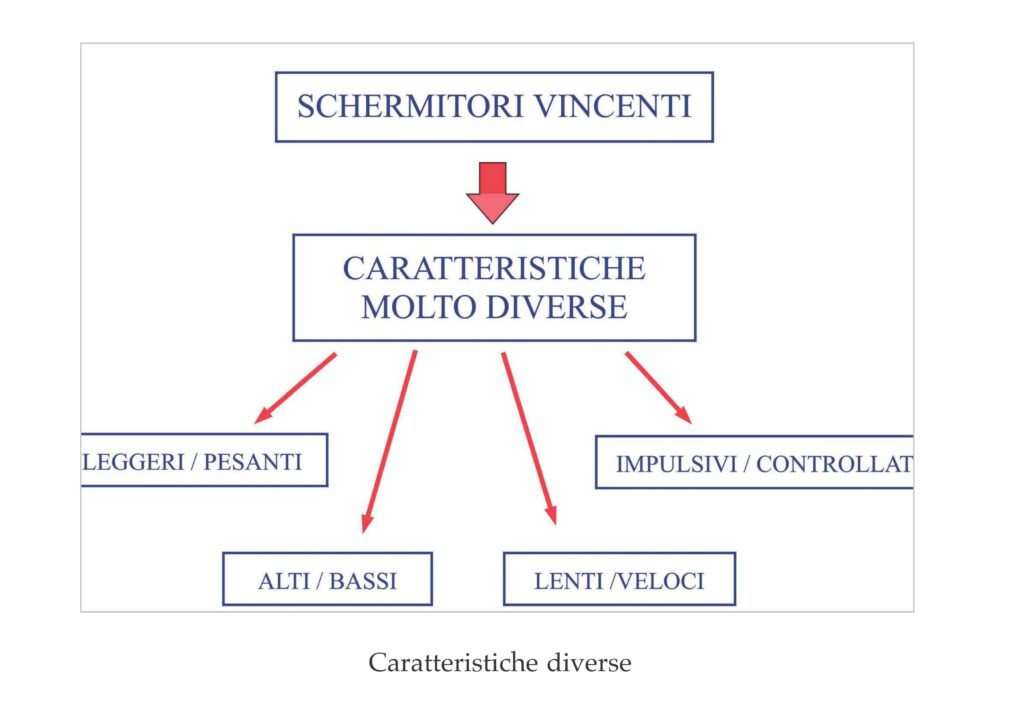
Different characteristics
So, why does fencing ‘appeals’ so efficiently on those who practices it and where does it bury it’s roots, where is it’s essence, from the point of view of biology, behaviourism, evolution?
The first aspect, common to all the other sports of competition can be identified in what the etologists call “the pecking order”. You can notice the hierarchical order in a group by observing who eats first and who eats last. In case of famine, the latter will die, and the former will survive, transmitting their genetic heritage. All animals, us included, are the result of a very long evolution during which to advance or to retreat on the hierarchical scale of the group could be of vital importance.
Maybe that’s why we love so much to compete – and hence sports.
But another aspect, more subtle, may be the most important to understand the essence of fencing. It could seem strange, and contraddictory, that there have been developed and transmitted also cooperative, altruistic behaviours, apparently a disadvantage for someone acting in favour of another.
The advantage is obvious for the cohesion of the group, but not for the single individual. But the thing changes aspect when the possible advantage is projected into the future. If today i give in on something to help a fellow of mine, i can expect that he may do the same when, in future, it may happen to me to be in need. This consideration leeds immediately to two consequences: i have to develop the ability to understand the intention of the other to reciprocate, and at the same time learn to defend myself from parassitical behaviours that inevitably will develop.
Today, this ability to place oneself on the point of view of the other, to read the mind, to know what he thinks, is widely proved by the study of the “mirror neurons”, a recent and very important discovery. But if the other, seeing my behaviours, is able to guess what i think and what i feel, i can also simulate actions and behaviours, to induce him to take wrong decisions.
Are you beginning to see the relationship with tactics, and with fencing?
Lying has a negative connotation, but only for social requirements. Actually we very much welcome and appreciate the ability to lie, as long as it is on a shared basis. The actors recite, the magicians deceive us, women and men trick themselves in infinite ways and the researchers tell us, with a downward estimate, that in comunication at least 70% is a lie, without even thinking of politics, the relations between sexes, and other fields still..
Fencing, that has his strong point in tactics, that is deceit, (today) is a game, or an art, that is based on common rules.
Beyond those, deceit is reprehensible, dishonorable, not chivalrous. Inside those, it’s art, decidedly appreciated.
But it’s not enough.
The rational understanding of those mechanisms, yet necessary, is too slow for the speeds requested in fencing. On the contrary, it’s an obstacle.
For a maximum of efficiency, the mind has to be able to operate at a speed reachable only with very evoluted automatisms, with intuitions that are immediately followed by the right actions.
At this point, rational mind becomes rather an obstacle. It has to work when there is enough time to think (out of distance) and stay silent when the opponent is near (in distance). And here we returned to the ancient and always actual techniques that obliged man to face himself, his thoughts, his fears, his breath, his being.
Once again, today, there are fencers that resort to ancient practices like meditation, to reach the mental silence necessary for being ‘one’ with the weapon and the opponent.
The nobility of our sport comes from the past, but only by understanding and valorising it, it can resist to the fashions, and project itself into the future.
Fencing is not just a sport: it is in our nature. We must go on studying, protecting and loving it.
Giancarlo Toràn
translated by Luca Gabriel Popper
*by “blow of the two widows” one indicates what in sportive fencing is, in the discipline of epee, the double touch: with the electronic signaling of the hits, the interval valid for it being registered is more or less half the tenth of a second. In duell, as being inflicted simultaneously, the double touch could be letal for both comtenders with the outcome, precisely, to make two woman widows at the same time.
**Dick Fosbury won the1968 Mexico City Summer Olympics in High Jump thanks to a jumping technique that he had invented (the Fosbury flop or backwards jump) that, wheras nowadays has become the dominant style, at his time was absolutely revolutionary.
*** The following immages are taken from Toran 1998
Bibliography
Agrippa C. (1553), Trattato di scientia d’arme, con un dialogo di filosofia di Camillo Agrippa milanese, in Roma: per Antonio Blado stampadore apostolico.
Girotto V., Pievani T. & Vallortigara G. (2008), Nati per credere: perché il nostro cervello sembra predisposto a fraintendere la teoria di Darwin, Codice: Torino
Tòran G. (1996), Introduzione alla tattica schermistica, Società Stampa Sportiva: Roma.
Toràn G. (1998), Considerazioni per formulare un modello di prestazione della scherma moderna. Atti del Convegno di studi. Il modello di prestazione della scherma moderna, tenutosi presso la Casa di cura S. Maria di Castellanza, il 16 maggio 1998, con i patrocini del Comitato regionale della Federazione italiana scherma e dell’ISEF della Lombardia, a cura di Giulio Sergio Roi et alii, FIS AIMS.

